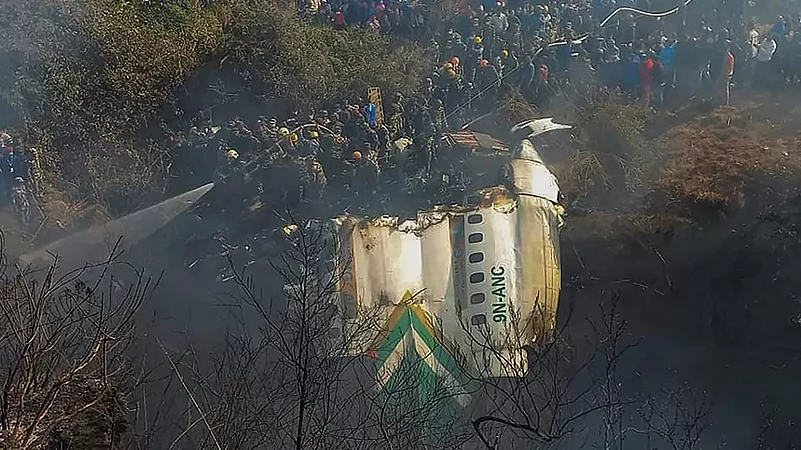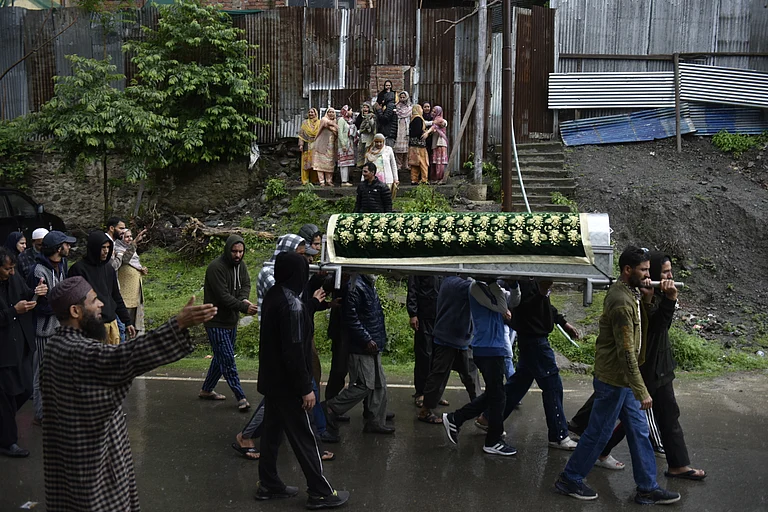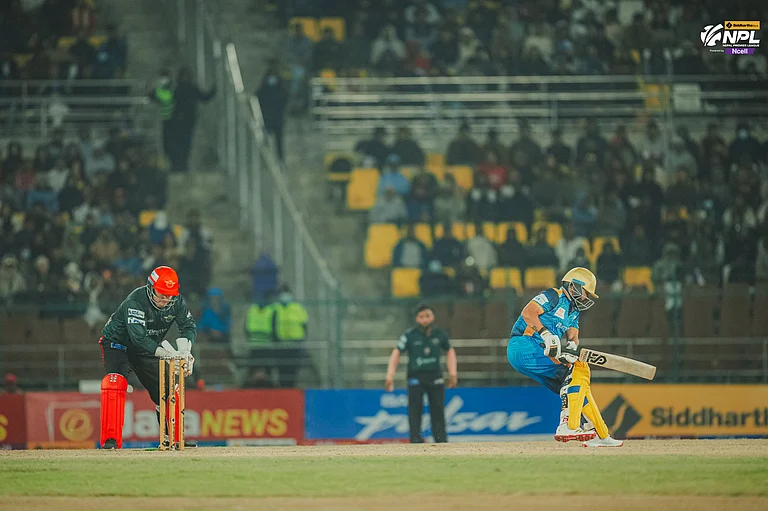The black box of the Nepali plane that crashed in Pokhara was recovered from the site of crash on Monday.
There were 72 people onboard the Nepali plane, including five Indians, when it crashed during landing. It was operated by Yeti Airlines. Sixty-eight bodies have so far been recovered.
Since there were no adverse weather conditions at the time of the crash, experts have said that system failure or human error could have been behind the air crash.
Here we explain what's known so far about the Nepal crash, what's black box, and how air crash investigations take place.
What we know of Nepal crash
The ATR-72 aircraft of the Yeti Airlines was going from Nepal's capital Kathmandu to Pokhara, a popular tourist destination. It crashed as it approached the airport for landing.
"At 10:32 am, the plane took off from Kathmandu. It was scheduled to land at Pokhara at 10:58 am. Was in continuous contact with Pokhara Tower. The landing clearance of that plane had also been obtained. The weather was also fine. Everything was fine then how the accident happened is a matter of investigation," said Premnath Thakur, General Manager, Tribhuvan International Airport, Kathmandu.
"A high-level investigation team has been formed. Any conclusion can be drawn by checking its voice recorder and other circumstances," Thakur said.
The team will submit its report within 45 days.
The plane commanded by Captain Kamal KC, an instructor pilot, made the first contact with the Pokhara control tower from nearly 110 kilometres away. He later asked for permission to switch to Runway 12 which is the western end.
"We were not sure why. Permission was granted, and accordingly, the aircraft started its descent,” said Anup Joshi, a senior air traffic controller.
There were no adverse weather conditions at the time of the accident. In a video showing the final moments of the plane, the plane is seen swerving wildly to one side. A clear and sunny sky is seen.
"The weather was clear. We allocated Runway 30 which is the eastern end. Everything was fine,” said Joshi, who is also the spokesperson for Pokhara International Airport (PIA), as per the Kathmandu Post newspaper. He added that no problems had been reported.
A pilot with a regional carrier, who has been flying ATR planes for nearly two decades, opined that the particular aircraft could have suffered a stall or there could have been a pilot error. The factors that led to the crash will be clear only after the completion of the investigation, the pilot added.
"The aircraft involved is a 15 year old ATR 72-500 with registration number 9N-ANC and serial number 754. This aircraft was equipped with an old transponder with unreliable data. We are downloading high resolution data and verifying the data quality," flight tracking website Flightradar24 said in a tweet.
Nepali plane's black box found, what's black box?
The black box of the Yeti Airlines aircraft was found on Monday and was handed over to the Civil Aviation Authority of Nepal (CAAN), said Sudarshan Bartaula, a spokesperson of the Yeti Airlines.
While it's called "black box", there are actually two boxes called flight data recorder (FDR) and cockpit voice recorder (CVR).
Both the CVR and FDR have been recovered as search and rescue teams rappelled down a 300-metre gorge where the plane crashed.
Finding CVR and FDR is the first step in an air crash investigation.
The CVR records every sound inside the cockpit where pilots sit and fly the plane. It captures radio transmissions, conversations inside the cockpit among the pilots and crew, flicking of switches, and any beep or warning from any of the instruments. CVRs can capture audio ranging from 30 minutes to up to two hours.
"There may be up to four microphones in the plane's cockpit, each connected to the cockpit voice recorder (CVR). Microphones send audio to the CVR, which digitizes and stores the signals. In the cockpit, there is also a device called the associated control unit, which provides pre-amplification for audio going to the CVR," notes explanatory website How Stuff Works.
The FDR records data from the plane's operating system. Every flicking of a switch or instrument handling is recorded in the FDR.
"There are sensors wired from various areas on the plane to the flight-data acquisition unit, which is wired to the FDR. So whenever the pilot flips a switch or twiddles a knob, the FDR records each action," nots How Stuff Works.
How Stuff Works notes that some of the information captured by FDR includes:
- Time
- Pressure altitude
- Airspeed
- Vertical acceleration
- Magnetic heading
- Control-column position
- Rudder-pedal position
- Control-wheel position
- Horizontal stabilizer
- Fuel flow
Together, the CVR and FDR help the investigators reconstruct the journey of the plane and timeline of the accident. It tells what was happening with the plane's systems, what warnings were issued, how the pilots reacted, and what was the communication with ground control. It helps investigators figure out the final moments in which the accideng happened.
Both CVR and FDR have their memory stored in hardware designed to withstand high-impact accidents.
How are air accidents investigated?
The first step is to secure the site of the crash and to look for the black box.
Finding and evacuating any survivors is also the first priority. If there is fire, then the fire is doused as evacuation and search begins.
The crash site and the wreckage of the aircraft is photographed and videographed and all debris is documented and collected.
"They also conduct interviews with eyewitnesses and draw charts showing the debris field and any indications of how the aircraft hit the ground, such as the angle of impact, the distribution of debris and other details," according to Daniel Kwasi Adjekum, an Assistant Professor of Aviation at the University of North Dakota.
Daniel added that investigators also collect all the documents related to the plane, its crew and its recent flights for forensic analysis.
There are specific technical support and investigation teams that look at technical aspects of the accident, such as the air traffic control activity and instructions, weather at the time of the accident, human issues like crew experience and training, plane’s maintenance records, emergency response, safety equipment, and the aircraft’s performance and sub-systems.
"They may disassemble the crashed plane’s engines or other components and use flight simulators to attempt to experience what the pilots were dealing with," writes Daniel in an article.
Forensic experts are also involved in the investigation as they test the dead for identification purposes. Moreover, they test survivors among the passengers as well as the crew for drugs or other substances to understand whether their conduct was compromised in any way or whether they were inebriated or in any kind of irregular mental or physical state that could have led to the accident.
The aircraft accident investigators must release a preliminary report to the International Civil Aviation Organization in 30 days, which is the specialised agency of the United Nations for civil aviation.
The final report is usually expected to follow the preliminary report before the accident's first anniversary.
(With PTI inputs)


























